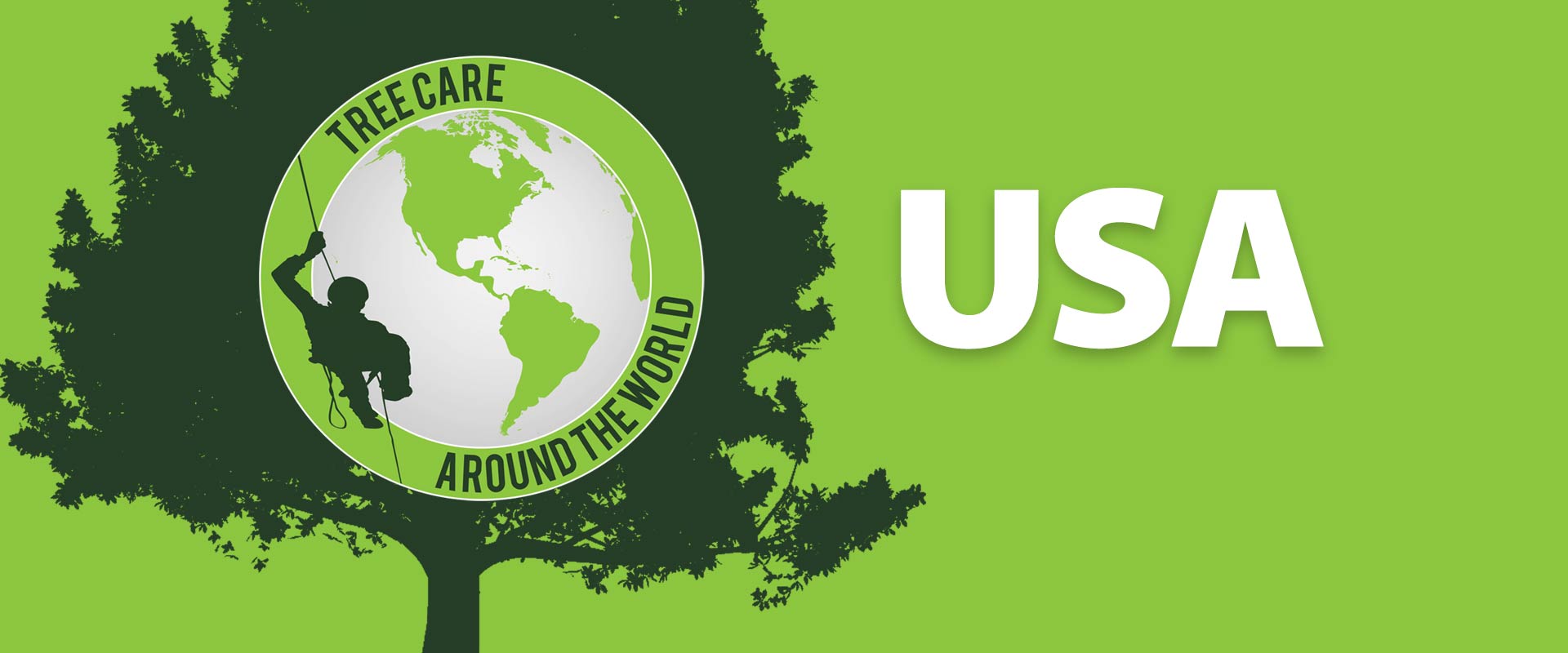There are currently 3.04 trillion trees and 7.2 billion people on Earth. Theoretically, this means that each person would have to take care of 422 trees, assuming they were all arborists. But, who takes care of trees in other countries? How do other arborists work in other parts of the world? What rules and regulations do they have to follow? What dangerous animals and plants are there? We aim to answer all these questions in our new series, “Arboriculture around the World.”
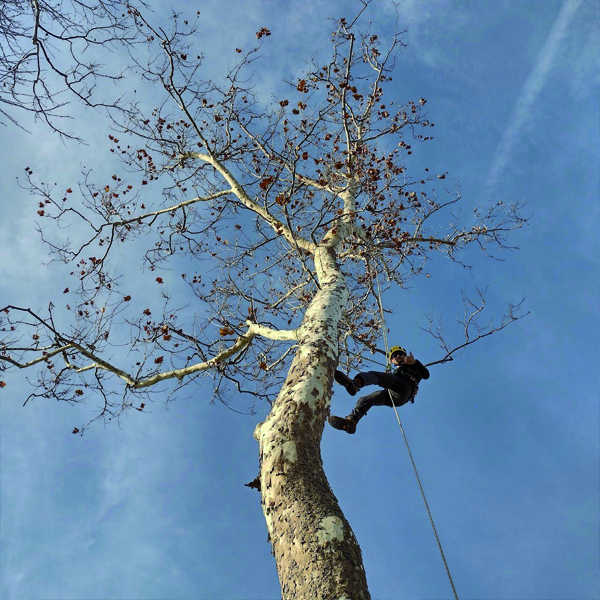
Our second of twelve destinations to answer these questions is in the Midwestern United States, bordered by the Appalachian Mountains to the south and Lake Erie to the north. It is the state of Ohio. Ohio was declared the 17th state by President Thomas Jefferson on February 19, 1803, although at that time they only had 45,000 of the 60,000 residents needed. Two hundred years later, Ohio is home to more than 11.8 million residents. One of those eleven million people is arborist Billy Bronson.
We were fortunate that Billy found the time to answer our questions during an interview, giving us the opportunity to learn more about the arboriculture scene in the United States.
Billy, where did you grow up and where do you work now?
I grew up moving around a lot. I was born in Ohio, made my way up and down the East Coast of America from Massachusetts to New Jersey to Maryland to Georgia. I ended up back in Ohio, just north of Cincinnati. That’s where I currently live and work.
There are different ways to become an arborist in Germany. How does the training to become an arborist work in your country? Is a certain level of schooling required here, or a degree?
Schooling isn’t necessary, though it helps. I have a degree in Envionmental Studies and Biology which helped a lot when attaining my ISA Certification. I learned everything I know about tree climbing through on the job training. I was lucky to work at a place where a lot of people were willing to go out of their way to help me advance as a climbing arborist.
How long have you been doing tree care? How did you get into arboriculture? And have you always wanted to be an arborist?
I’ve been climbing trees for about a year and a half, and I absolutely love it. Before I was an arborist I was working as an assistant to a toxicologist. I spent my days in an office writing reports. I was bored out of my mind! I decided I needed a change. I got online and looked up “cool outdoor jobs” and found “arborist.” When I saw pictures of people climbing trees I was immediately interested. I had never heard to this job before. I found a company that was hiring and a few weeks later I was learning to climb trees.
Our followers on Facebook and Instagram are very clearly divided. 90% are male, 10% are female. What do you think is the distribution between male and female arborists in your country?
I’d say that distribution is roughly the same. I don’t personally work with or even know any female climbers, which is a shame.
How would you describe the arboriculture community in your country? How are you connected to the international community?
The arboriculture community has to be the best community I’ve ever been a part of. In my experience this far, everyone I talk to who takes care of trees is open to sharing all of their knowledge. The climbing community on Instagram as been incredible. Climbers from my country and from around the world have answered all of my questions, offered me tips and tricks, or invited me to join them in some Recreational Climbing to help hone my skills. Instagram has been so helpful in connecting with the community, both at home and international.
Could you imagine working abroad? If yes, where? If no, why not? Or do you already have experience in this field?
I’d love to work all over the world. I’ve been very interested in traveling to Northern Europe to work; Germany, Denmark, Norway, Sweden, just to name a few. One of the very best parts of the job is the view from the top so I’d love the opportunity to see different parts of the world from the top of a tree.
Let’s move on to the technical questions.
What equipment do you use? Do you import equipment or are there also local manufacturers?
Ich trage ein TreeMotion Evo und klettere mit einem einfachen Umlenkrollen-System. Mein Seil ist ein Tachyon Ash von Teufelberger. Most of my gear is from Europe.
What kind of regulations – for equipment – excist in your country? How strictly are these followed and controlled?
In America, we follow ANSI Z133 & Z89.1 and OSHA (Occupational Safety and Health Administration) standards. These are strict for professional companies. I’ve worked a few jobs in the past for guys who didn’t use hearing protection and turned their noses up at helmets and they have no one enforcing the safety standards. Larger companies are absolutely following safety standards. I’ve seen individuals decide they don’t want to wear a helmet or a safety harness when working in an aerial lift, but for the most part the people I work with stay safe in accord a with ANSI Z133 and OSHA.
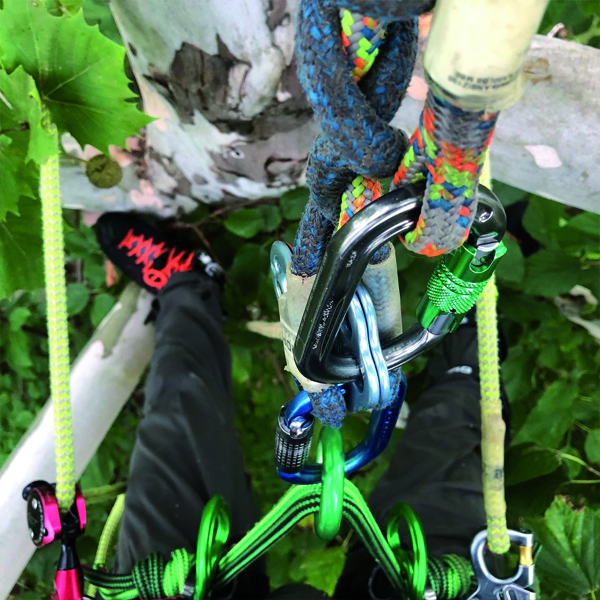
Do you climb SRT or DRT? Or both in combination?
I climb mostly DRT. I’ve climbed SRT a few times but I’m still learning. /p>
What is your preferred rope device or friction hitch cord?
I have used a few mechanical devices but I prefer using a hitch pulley and an eye to eye. I’m partial to DMM hitch systems. Very smooth, secure.
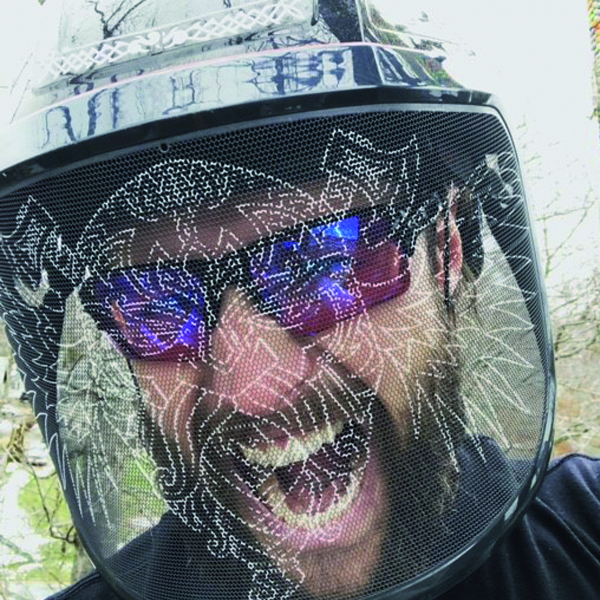
What is your favorite tool or product?
My favorite product is my Protos Ragnar helmet. I knew I wanted a Protos when I first started climbing. After about a year on the job I decided it was a worth the investment. My favorite parts of the helmet are the face shield and the low profile integrated hearing protection.
The USA have redwood trees, Japan the cherry blossoms. Which tree is special to your country? & What is your favorite tree?
I’m not sure about a singular tree that’s special to America outside of the Redwoods. Where I live, it seems like every street is named after a different tree. We have a lot of neighborhoods and communities named after trees. So I can’t say for certain what tree is special to USA other than the Redwoods. Me personally, I love oak trees, specifically white oak, Quercus alba. I don’t really know why. I just feel drawn to it.
Canada has bears, India has tigers, Germany has the oak processionary moth and Australia has many poisonous and dangerous animals. What is the most dangerous animal in the tree or in the environment that could get in your way?
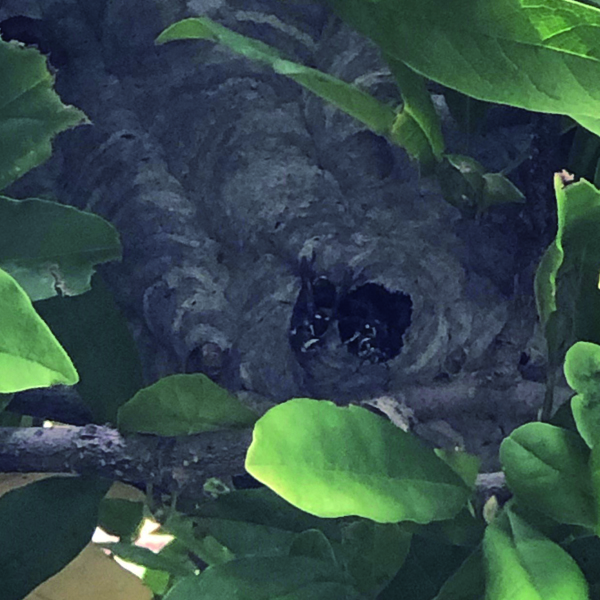
I know in the Western United States they have to deal with bears or mountain lions occasionally. The biggest threat to my day while up a tree are bald faced hornets. These are large hornets with white faces and they are extremely protective of their nest. If I see a nest in a tree I avoid that part of the tree the best I can. What’s dangerous is when I don’t see the nest. I had a few attack my hand once and I was 15+ feet away from them. Lesson learned: inspect the tree for hazards before beginning work!
But not only animals can be dangerous. What are the most dangerous plants you can encounter?
We have to look out for poison ivy, Toxicodendron radicans . It can cause a very itchy rash. I’m not very reactive to it but some of my coworkers are highly allergic.
In Germany, some species of flora and fauna are protected. Do you also have species to watch out for or do you protect things in your own way?
Honey bees are protected, some species of migrating birds are protected, certain times of the year trees where bats are known to roost are protected. Personally, I’m an animal lover. If I don’t absolutely have to, I don’t move squirrel or bird nests, disturb spider webs, or otherwise alter the wildlife found in or around a tree unless it’s devestating to the health of the tree. I also try to explain to customers the ecological benefits of having such diverse wildlife living in or on a tree.
In Germany, the peak season for tree care usually starts in April. In which month or at which time of year is the peak season for tree care in your country?
In America, at least here in Ohio, we are very busy during the spring and summer months, April-August. Fall can be busy as well and we are slow in the winter but never no work.
Depending on the country, there are different seasons or dry and rainy seasons. What was the most extreme weather you worked in? Heat? Ice? Rain? Storm?
Heat! During the summer we consistently have 90+ °F days. Those days are dangerous. I’ve worked in some rain and snow but the heat is the worst. I’d take a cold winter day over the summer heat any day.
In some countries it is not easy to call an ambulance quickly. How quickly would an emergency rescue service reach you if you needed one?
Most of the jobs I work are close to emergency services. Rarely do I work in such rural areas that it would take more than a few minutes for help to arrive.
What role do local governments and communities play in promoting and supporting tree care in your home country?
I’d say local governments and communities can play a large role. Generally if a tree is on your property it’s up to you to decided how to take care of your tree. However, I often work in a particular community where the local government and a board of citizens must be consulted before a tree can be removed, even on private property. Usually, in order for a tree to be removed there has to be a statement from an ISA Certified Arborst showing that the tree poses a hazard. A lot of neighborhoods have a Home Owners Association (HOA) that can enforce tree care and aesthetic standards as well.
What are the future prospects for tree care in your home country and what can be done to maintain and promote the health and beauty of trees?
Tree care in America is a divided subject, as are most subjects here. There are plenty of individuals and organizations that promote healthy green spaces and lobby for laws protecting trees and wildlife. There are plenty of individuals and organizations that don’t prioritize the environment or think a healthy/balanced ecosystem is important. Thats another conversation. I’m just happy to do my part in taking care of trees.
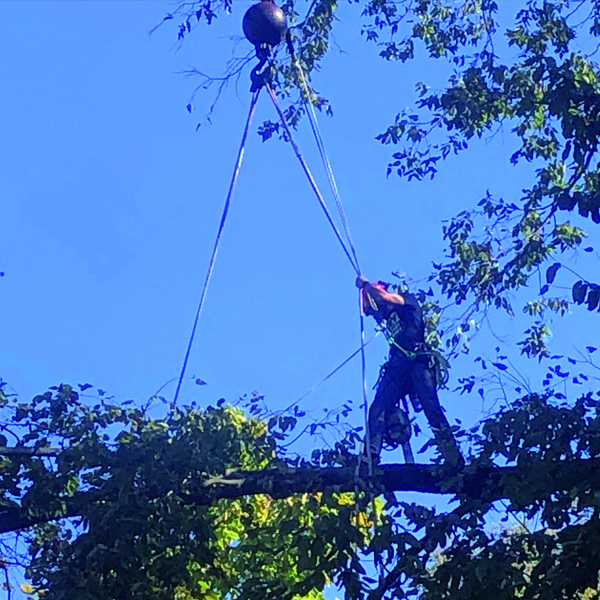
And the last question. What was your most spectacular or beautiful workday that you will never forget?
Tree care in America is a divided subject, as are most subjects here. There are plenty of individuals and organizations that promote healthy green spaces and lobby for laws protecting trees and wildlife. There are plenty of individuals and organizations that don’t prioritize the environment or think a healthy/balanced ecosystem is important. Thats another conversation. I’m just happy to do my part in taking care of trees.
Billy, that’s it for the interview. At this point, thank you again for this great opportunity and your participation. It’s incredible how different the scene already is in a few thousand kilometers. Stay healthy and keep having fun at work. If you want to know more about Billy and the arboriculture scene in the US, feel free to stop by his Instagram channel .
Our next destination is still set for later this month: We’re headed to Scandinavia, Sweden is our destination. Until then, climb up safe!

